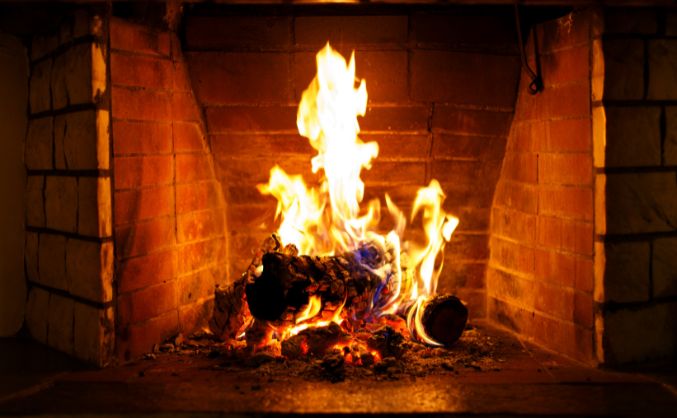A cozy fireplace sets a warm and inviting atmosphere in any home, but it’s crucial to recognize that the real heat should come from the fire, not from a chimney fire. Chimney fires can be silent yet destructive threats, posing significant risks to your home and safety. This guide will delve into how to prevent chimney fires, a vital aspect of fireplace maintenance.
First, regular chimney cleaning is essential. The National Fire Protection Association (NFPA) recommends annual inspections of your chimney, fireplace, and vents. These inspections can catch buildups like creosote, a highly flammable byproduct of wood burning. Removing creosote significantly reduces the risk of chimney fires. For more detailed guidelines, visit the NFPA website.
Another crucial step in preventing chimney fires is using the right wood. Burning seasoned or dried wood, rather than green or wet wood, minimizes creosote accumulation. Wet wood leads to incomplete combustion, which in turn increases creosote buildup. For tips on selecting the right wood, check out this resource from Chimney Safety Institute of America.

Recognizing the Signs of a Chimney Fire
Awareness is key in handling chimney fires. Often, chimney fires can occur without immediate signs, making them particularly dangerous. However, there are a few indicators to watch out for:
- A loud, cracking, or popping noise from the chimney area
- An intense, hot smell coming from the fireplace
- Dense, dark smoke emanating from the chimney top
If you notice any of these signs, it’s crucial to act quickly and safely. Evacuate everyone from the house and call the fire department immediately. Do not attempt to extinguish the fire yourself.
Steps to Take in Case of a Chimney Fire
Even with all the preventive measures in place, it’s vital to know what to do in case a chimney fire does occur.
Immediate Response:
The first step is to remain calm and act swiftly. If you suspect a chimney fire, evacuate all occupants from the building immediately as a precaution. Safety is the foremost priority, and ensuring everyone is out of harm’s way is crucial. Once everyone is safe, call the fire department immediately to handle the situation professionally.
Limiting the Fire's Oxygen Supply:
After ensuring everyone’s safety and calling for help, try to reduce the fire’s oxygen supply. This can be done by closing the fireplace damper and any air inlets. Limiting oxygen can help slow down the fire. However, this step should only be taken if it can be done safely without risking personal harm.
Avoiding Water Use:
It’s important not to use water to extinguish a chimney fire. Water can cause thermal shock to the chimney structure, potentially leading to more significant damage. Additionally, water can create a steam explosion, posing a risk of injury. It’s best to leave fire extinguishing to the professionals.
Post-Fire Action:
Once the fire department has addressed the situation, do not use the chimney or fireplace until it has been professionally inspected and cleaned. A chimney sweep should evaluate the integrity of the chimney structure and clean any remaining debris or creosote. This step is vital to prevent future fires and ensure the safe operation of your fireplace.
Remember, proactive measures and awareness are key to preventing chimney fires. Regular inspections and maintenance play a crucial role in fire safety. In case of a chimney fire, prioritizing safety and seeking professional help are the most important actions you can take.
For homeowners seeking professional and reliable chimney and fireplace services, Demarco Restoration offers expert solutions. With a commitment to safety and excellence, Demarco Restoration ensures your fireplace is not just an aesthetic addition to your home, but a safe and enjoyable feature.
Visit Demarco Restoration to learn more about their services and how they can help you maintain a safe and cozy fireplace.
Ensure Your Chimney's Safety with Expert Care
Chimney fires can be a silent threat, but with proper knowledge, precautions, and maintenance, they are preventable and manageable. Regular inspections, using the right fuel, and recognizing the signs of a chimney fire are key steps in safeguarding your home. In the unfortunate event of a chimney fire, remember that your safety is the top priority.
After such an event, professional guidance and repair are essential to ensure your chimney’s integrity and your home’s safety. Trust professionals like Demarco Restoration to provide the expertise needed for your peace of mind.

